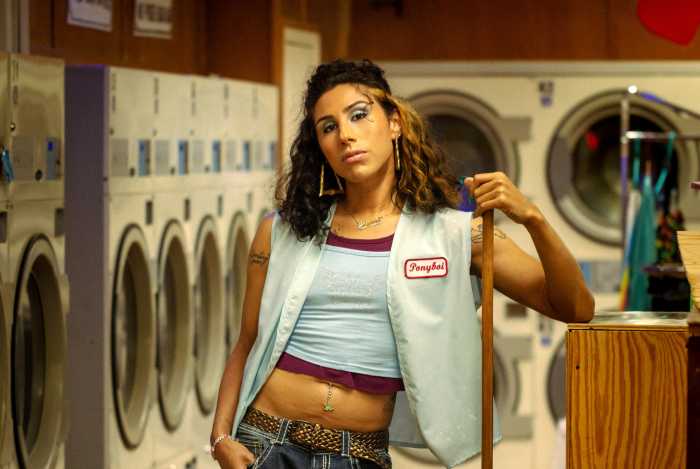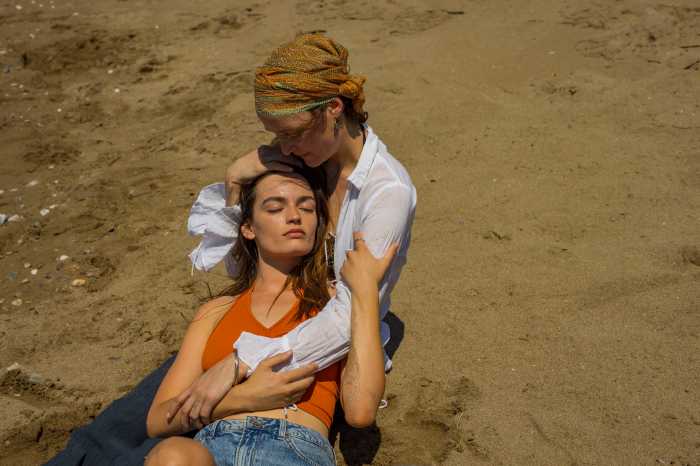Daniel Day-Lewis and Vicky Krieps in Paul Thomas Anderson’s “Phantom Thread.”LAURIE SPARHAM/ FOCUS FEATURES
Paul Thomas Anderson’s “Phantom Thread” is set in the 1950s and it could have been made then — aside from the handful of F-bombs Reynolds Woodcock (Daniel Day-Lewis) drops with great force — and it borrows from the most perverse fantasies classical Hollywood was allowed to express. It’s the kind of film that defeats instant snap judgments, setting a man who doesn’t take responsibility for his own ability to control others in a world that’s almost all female. This world is also mostly white, and I’m not talking about race; a central, recurring image is a close-up of a needle poking its way through blindingly pale clothes, since Woodcock and his sister are dressmakers.
Anderson is rumored to have acted as his cinematographer here. He has made ambiguous claims about this, and there’s no D. P. credit on the film itself.
The exact timetable of “Phantom Thread” is uncertain, but Reynolds and his sister Cyril (Lesley Manville) are royalty in the British fashion scene under the brand of the House of Woodcock. (At one point, it was hinted that Reynolds was based on real-life designer Charles James, but that has been scrubbed from the finished film, although when I googled the film, I found a photo of Day-Lewis in it calling his character “Charles James.”)
Daniel Day-Lewis is fashion royalty challenged by a woman in a way he’d never experienced
Reynolds may not exactly be a womanizer in the most exploitative sense, but he is happy to stay single and not take his sexual relationships very seriously. Women serve as temporary muses and companions. Then, he meets a much younger woman, Alma (Vicky Krieps), with whom he finds a far more serious bond. His relationship with her becomes challenging in a way that women have never before been for him.
I prefer “Phantom Thread” to almost every other film, documentary or narrative, I’ve seen about the fashion world, but it reduces that world to a relatively tiny house. While there are some exteriors, at least three quarters of the film was shot in a genuine townhouse. This did not please Day-Lewis or Krieps, and even Anderson admits it created problems. The crew’s equipment had to be hidden in a room just beyond the one where shooting took place and then moved again when shooting began in another room. Krieps has said the crowding gave her a panic attack one day. At a press conference quoted by the website Indiewire, Day-Lewis said, “The way it works if it’s helpful is that these rooms belong to you. You work in a room, then you have to move all that shit into another room, and that space becomes a storage space.”
Even at 60, Day-Lewis gives Reynolds a sex appeal that Daniel Plainview, the character he previously incarnated for Anderson in “There Will Be Blood,” was far too concerned with worldly power and impressing other men to exude. In some ways, Anderson’s 2000 “Punch Drunk Love,” which offered the first hint of the acting talent Adam Sandler possesses but spent his career mostly wasting, is the closest item in his filmography to “Phantom Thread.” “Punch Drunk Love” is more or less a comedy, and it was made by Anderson as a deliberate departure from his rather bombastic three-hour-long films like “Boogie Nights” and “Magnolia.”
“Phantom Thread” contains some laughs, but it’s a grimmer affair in its depiction of male immaturity (from a man much further into middle age than Sandler’s character in “Punch Drunk Love.”) As in “The Master,” Anderson’s fictionalized take on L. Ron Hubbard and the start of Scientology, he’s concerned with the flow of power from one person to another.
There are some shots of spiral staircases in “Phantom Thread” that evoke Alfred Hitchcock’s “Vertigo,” and the narrative suggests his and Daphne DuMaurier’s “Rebecca.” Superficially, this film resembles the kind of neo-Tradition of Quality period piece that usually stars actors like Dame Judi Dench and that often fills arthouses during Oscar season.
At its core, it’s a tale of physical and emotional manipulation more akin to Rainer Werner Fassbinder. But its push and pull between men and women is quite Hitchcockian as well. It’s a male fantasy of a female fantasy about how to deal with being the object of a male fantasy. The claustrophobia of the shoot made its way into the finished film. If you want a clear message about how men and women should behave toward each other, this is not the film to see. If you want to exit it arguing about what exactly it’s doing and how women should fight back against sexism, this should be your choice — and its embrace of ambivalence and refusal to settle for easy answers are all too rare these days.
PHANTOM THREAD | Directed by Paul Thomas Anderson | Focus Features | Opens Dec. 24: Regal Union Square Stadium 14, 850 Broadway at 13th St.; regmovies.com | AMC Loews Lincoln Square 13, 1998 Broadway at W. 68th St.; amctheatres.com | Opens Jan. 11: Alamo Drafthouse Cinema — City Point, 445 Albee Sq. W. at Flatbush Ave., Brooklyn | drafthouse.com/nyc



































